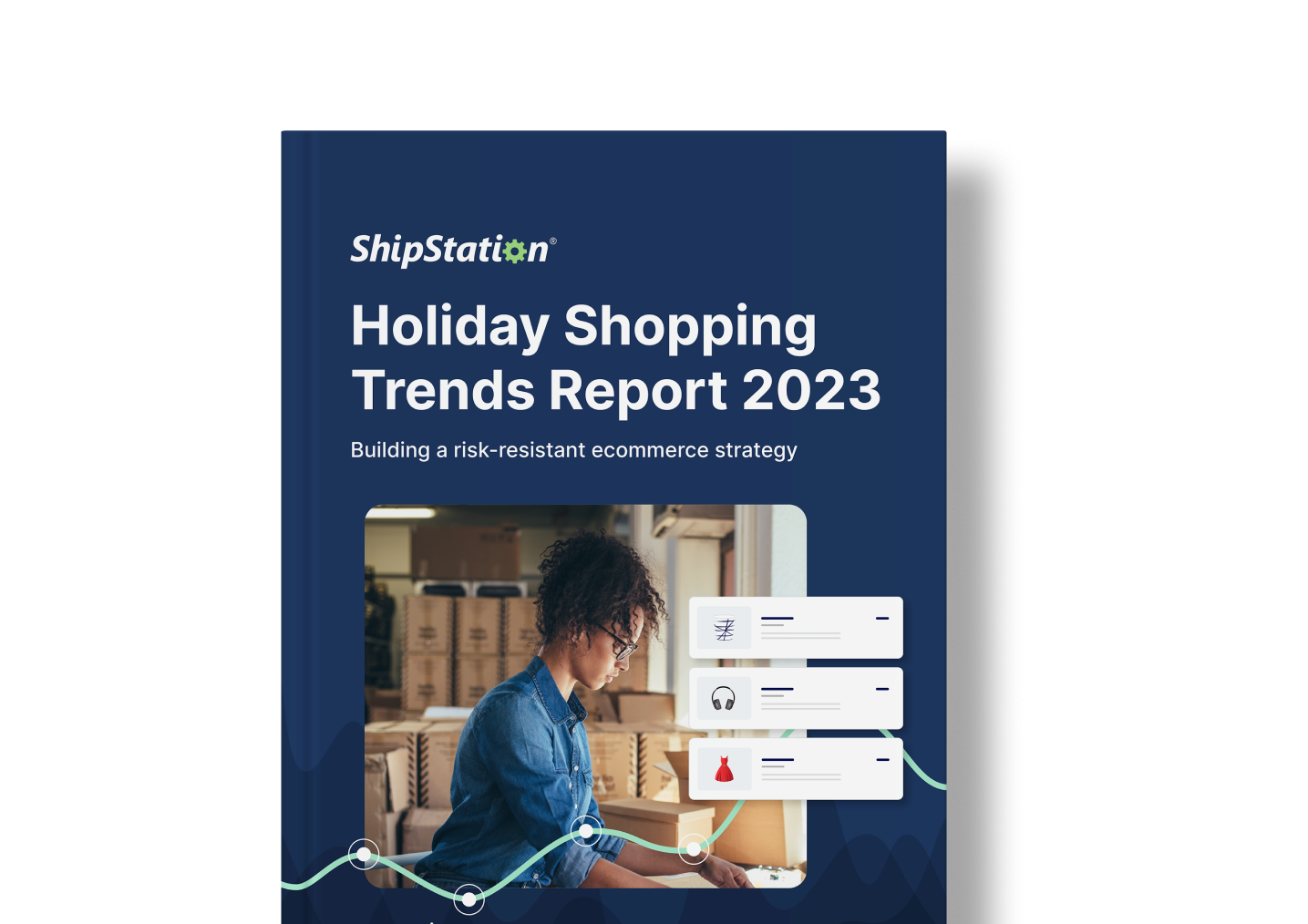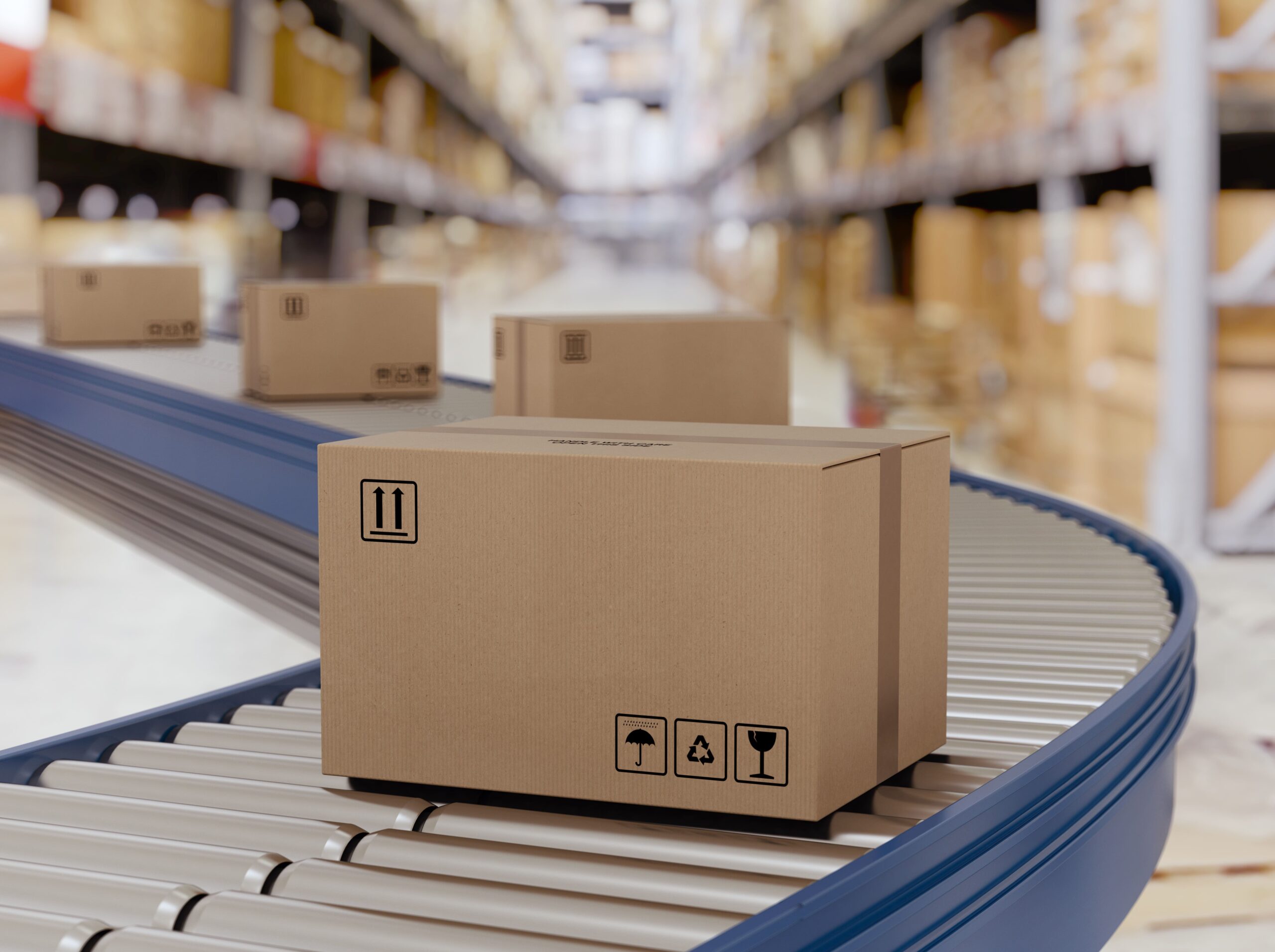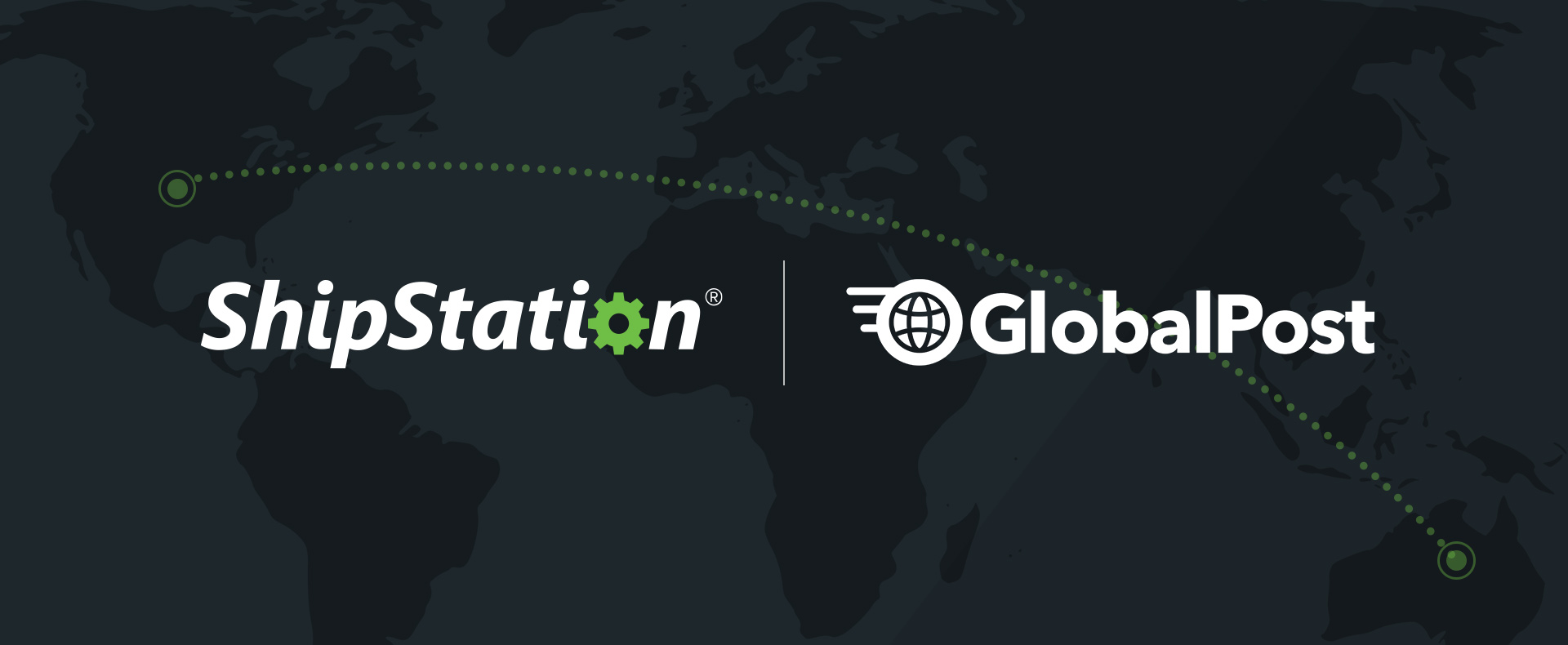How to Move Your Brick and Mortar Store Online
Pivoting to an online business can seem daunting. But, luckily, ShipStation has the resources and partners to make this transition as smooth as possible. There are, admittedly, a lot of steps to consider when building out your ecommerce business platform. ShipStation’s main goal is to help ecommerce businesses save time and money when they sell online, ship their orders, and scale. To make this process simpler, we’ve put together a guide that outlines what you need to do to move online.
Whether you have questions about shipping workflows or even which printers work best for label printing, we can gladly connect you with a member of the ShipStation team to get you up and running in no time. Or if you want us to field some questions you have about moving your business online, we will gladly hop on a demo with you and help make this as streamlined as possible.

BEFORE YOU GO LIVE
The bulk of your setup will happen before you start selling online. If your business is established already as a brick and mortar, then you’re at least on the right path.
Know What to Charge
The first thing you need to figure out when moving your business online is which of your products are going to be available online, and which new products you want to sell. Remember that there are a few pricing strategies and different methods on how to ship a package to choose from. Item price and shipping costs can go hand in hand. This is why it may be a good idea to go on and set up some carrier accounts. Remaining competitive with your competition is a must.
Here are some carrier accounts you’ll want:
Stamps.com: Stamps.com allows you to print USPS labels at a discounted price. Because of ShipStation’s good relationship with Stamps.com, you can save even more money when printing USPS postage.
UPS: UPS is a little more expensive than USPS, but there are more express shipping options and included coverage for things like lost or damaged packages. ShipStation users can also save over 40% on label fees if you use UPS if you print the labels within ShipStation.
FedEx: FedEx is another carrier that offers short delivery times and delivery guarantees.
Shipping Cost
You’ll want to be able to get a good understanding of what shipping costs per shipment. Otherwise, you could risk having such low-profit margins, that it can make you lose profits. Conversely, if you charge too much, you discourage buyers altogether. Whether you use flat rate shipping, free shipping, or charge based on delivery speed, there are several options you can use. While you can charge different shipping rates based on each item’s weight and/or delivery cost, creating a simple, easy-to-understand shipping price is the best way to encourage customers to buy from you.*
Flat-Rate Shipping
Flat rate shipping is a common pricing structure for ecommerce businesses. Consistent pricing is convenient for sellers and customers alike. As a customer, factoring additional shipping charges is more convenient and fair on a per order basis. Charging $4.95 per shipment works a lot better than charging shipping per item. Charging shipping per item can restrict conversions, customer loyalty, and the quantity of items in a purchase.
Free Shipping
If you can afford free shipping, then you should offer it. 95% of online shoppers say shipping costs play a role in what they purchase and from where. Of course, free shipping is almost never actually “Free.”Luckily, there are ways to hide shipping costs within products. Injecting shipping fees into the item cost is a popular way of doing this—particularly for smaller items that ship with First Class Mail. If you look at many major online stores that offer free shipping, such as Amazon, most sellers on these platforms charge slightly higher prices than you’d find in a physical store. This is because they want to offer free shipping.
If someone plans on buying online, free shipping makes them comfortable that there won’t be any surprises to their order total. Furthermore, if you sell specialty items or items that are not easy to find in brick and mortars, these slightly inflated prices aren’t much of a big deal.
Shipping Policy
Shipping is a big selling point for customers. In fact, 96% of consumers factor shipping into their purchase decision shopping online. In order to compete with the big guys like Amazon, you’ll want to have a definite time frame to give the customers for how long it will take to ship their products. For instance, try and ship orders out within 24 hours of being placed. Offering next-day shipping is a great way to incentivize customers. Also, a return window of 14 days is very standard. Offering these two shipping options, as well as a shipping confirmation email with carrier tracking, can give you the edge over the competition.
For more information on how shipping influences customers’ decisions, check out our research study we conduct by surveying over a thousand consumers on which shipping options help customers commit to buying.
Showcase Your Products
One of the obvious disadvantages of moving your business online is that your customers lose the ability to interact with your products directly. As such, you need to create a greater sense of engagement with your products through meaningful photography and copy.
Product Photography
Product photography needs to be more than “just a pretty picture.” Effective photography sells the experience of owning and using the product. For tips on how to engage customers through photography techniques, read our blog on the topic. It includes tips like how to make lifestyle, scale, component, and individual shots to let your customers get the best idea of what they’re buying.
Write Great Product Descriptions
A good product description should give customers the best understanding of what they’re buying. Remember, you’re not selling the product, you’re selling the experience. Don’t include things like the item price or discounts in the product name. Also, be mindful of consumer’s brief attention spans. Don’t put everything in a wall of text. Break out item descriptions into bullet points. Listing product dimensions as well as what is included with their purchase can be a way of incentivizing customers while also reducing complaints or chargeback.
Set Up an Online Store
If you plan on selling online beyond COVID-19, there are a few options available. You may find some free platforms; these are generally shopping carts that require you to host the website yourself, and that generally requires a lot of development work and extensive build time to go live with the website. To save time, let’s just go over five of the main options.
WIX
If you’re looking to build a high-converting eCommerce website, use one of Wix’s many online store templates. Wix’s platform includes must-have eCommerce features for businesses just getting started as well as large enterprises looking to scale. Use the platform’s integrated dashboard to accept payments, sell across multiple channels and manage your inventory and marketing campaigns. The business premium plans cost between $17-$35 per month.
Squarespace
As far as website builders go, Squarespace is a little more complex than WIX. Their complexity isn’t a bad thing, though. In fact, many consider Squarespace to be the best drag-and-drop website builder for ecommerce. Its monthly fees start at $30 per month. IF you want to start listing your products online, Squarespace gives robust options for selling from your website. If you want to start a blog as well, SquareSpace’s blog builder is intuitive and clean.
Shopify
Unlike Squarespace and Wix, Shopify is built expressly for selling online. If you are looking for a specialized place to sell, Shopify is an industry-standard for shopping carts. You can build a professional store quickly and efficiently and connect just about any payment processor you want. So, if you want to take a little more time to set up a webstore, then Shopify can be a good option for listing and selling your products.
BigCommerce
BigCommerce is an online selling platform that was built for ecommerce. It comes with built-in marketing tools and features like inventory control. Like Shopify, there’s a lot of payment processors to choose from. BigCommerce also has a variety of site tools that make reporting on and growing your online business easy. Learn more about BigCommerce and start a free trial today.
Miva
Miva is an ecommerce platform built to help online sellers drive sales, maximize average order value, cut costs, and increase revenue. The Miva platform supports retail, wholesale, and direct-to-consumer sellers across all industries. Learn more at miva.com.
Set up a Payment Processor
PayPal
PayPal has the most name recognition in this space, and for good reason. Their ease-of-use makes them a great choice for small businesses to start processing payments for online orders.
Stripe
Stripe and PayPal are often compared. The general consensus is that PayPal is more intuitive and easy to set up. However, Stripe offers far more features than PayPal that can help grow your online selling presence. However, these products, such as Stripe Sigma and Stripe Connect, generally need developer resources to be completed.
Pass PCI Compliance
PCI DSS compliance (Payment Card Industry Data Security Standard) is a mandate required by credit card companies to securely accept and process online payments. You’ll need to check the different levels of compliance for each card company, such as Visa and Mastercard. To become PCI compliant, you’ll want to be able to do the following:
- Protect cardholder data by installing and maintaining a firewall.
- Create your own passwords, don’t use vendor-supplied defaults for system passwords and other default security parameters.
- Protect stored cardholder data.
- Encrypt transmission of cardholder data when sending data across open, public networks.
- Use and regularly update anti-virus software.
- Develop and maintain secure systems and applications.
- Restrict access to cardholder data by business need-to-know. Restrict physical access to cardholder data.
- Track and monitor all access to network resources and cardholder data.
- Regularly test security systems and processes.
- Maintain a policy that addresses information security.
For more information about PCI compliance, check out the official website.
GDPR and CCPA Compliance
Data privacy is an evolving field. Ultimately, these laws allow any person that lives in Europe (GDPR) or California (CCPA) to have the right to have personal data erased from your system and any other system you integrate with. For more information on compliance with these acts, head to gdpr-info.eu/ and oag.ca.gov/privacy/ccpa. Ultimately, you have a short window of time to respond to any customer request asking that their information be deleted, and then an extended window of time to contact each data processor you integrate with to request their information be removed.
Taxes
One of life’s certainties, of course, stretches into ecommerce. Luckily, you have options. Whether you use an existing system like Quickbooks or switch to something like Avalara, you will need to properly charge and file taxes.
Quickbooks
Intuit QuickBooks Online® is an easy-to-use, feature-rich online version of America’s most popular accounting software for small businesses. It helps small businesses save time organizing their financial data in one place – anytime, anywhere – with no accounting knowledge necessary. Users can access their data on any internet-connected PC or Mac computer via popular web browsers without having to install the software.
Avalara
Avalara TrustFile makes it fast and easy to file sales tax. Whether you file sales tax in one state or several, TrustFile helps you stay on top of varying deadlines, forms, and requirements. Our software streamlines the process and helps you get organized. Use TrustFile to get started with headache-free sales tax filing.
AFTER YOU GO LIVE
Advertising on Social Media
After you set up your store, there are a couple of things you can do to increase traffic to your site. This is when you need to really start focusing on your marketing. Advertising on Facebook and Instagram is growing in popularity. It can give you a boost that is less costly than more traditional means of advertising while still being as effective. Hootsuite has a good guide that goes over how to advertise on social media effectively.
Adding Marketplaces
Another question you need to ask yourself is, who is your audience? Are you mostly reaching your existing customer base with a pickup in-store or local delivery options? If you want to expand nationally or even internationally, marketplaces are a great place to sell your products.
These are each good ways to grow your business by putting your products in front of your customers where they shop. If you sell effectively on marketplaces, this is a great way to bring them into your brand’s ecosystem and create long-term customers.
ABOUT SHIPSTATION
ShipStation is the world’s leading web-based shipping solution that helps ecommerce retailers import, organize, and ship orders quickly and easily—wherever they sell, however they ship. ShipStation’s features include auto-selecting shipping preferences, customizable automation rules, multi-carrier shipping with rate calculators, and much more. ShipStation leads its field with over 160 integrations to the top marketplaces and selling channels—Amazon, eBay, Shopify, Magento, Squarespace, and many more. Create a new UPS, USPS, or FedEx account in ShipStation to access discounted rates. Or connect an existing account from some of the world’s leading carriers and fulfillment providers, such as FedEx, USPS, UPS, Canada Post, Australia Post, Royal Mail, FBA, DHL, and many more.





